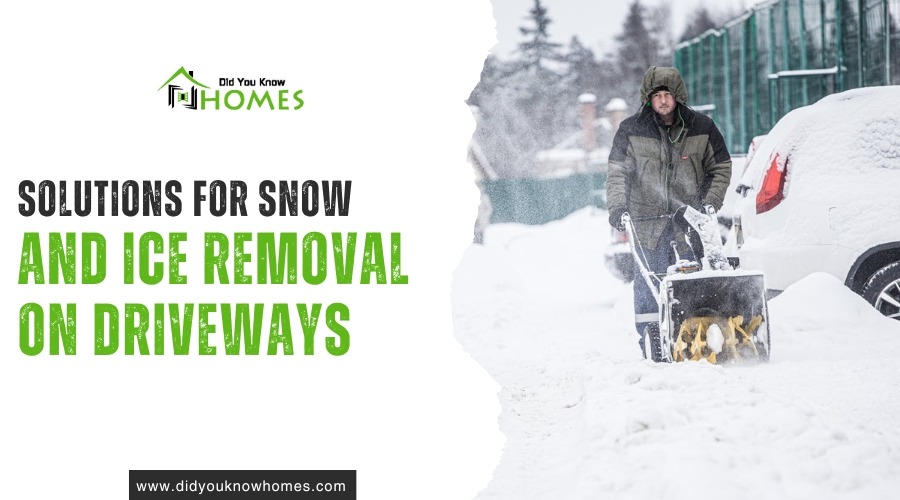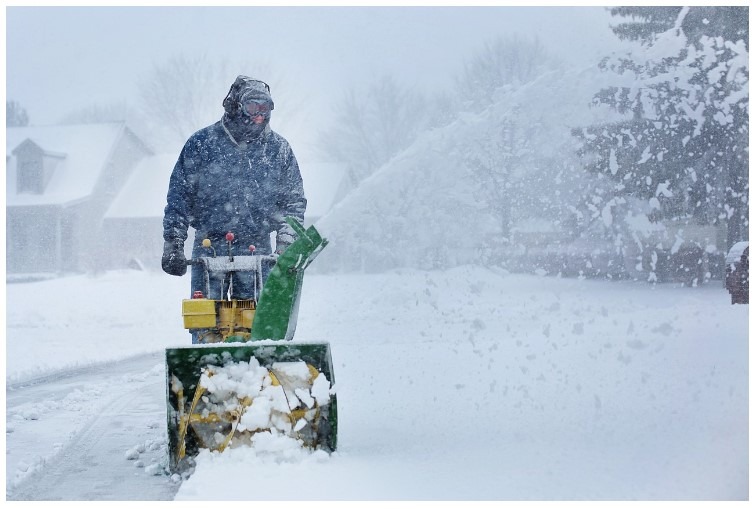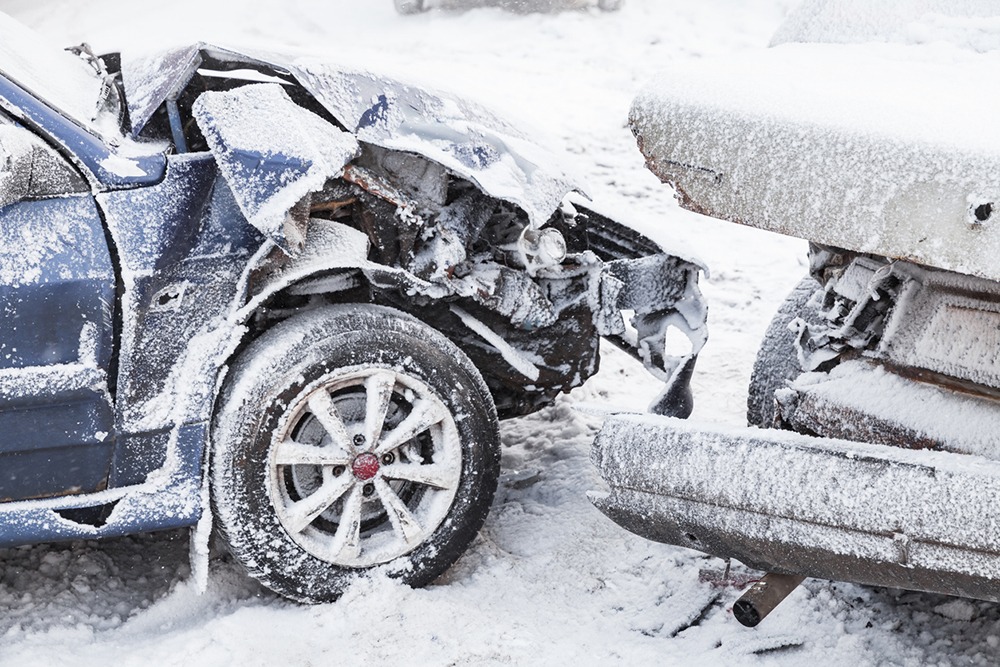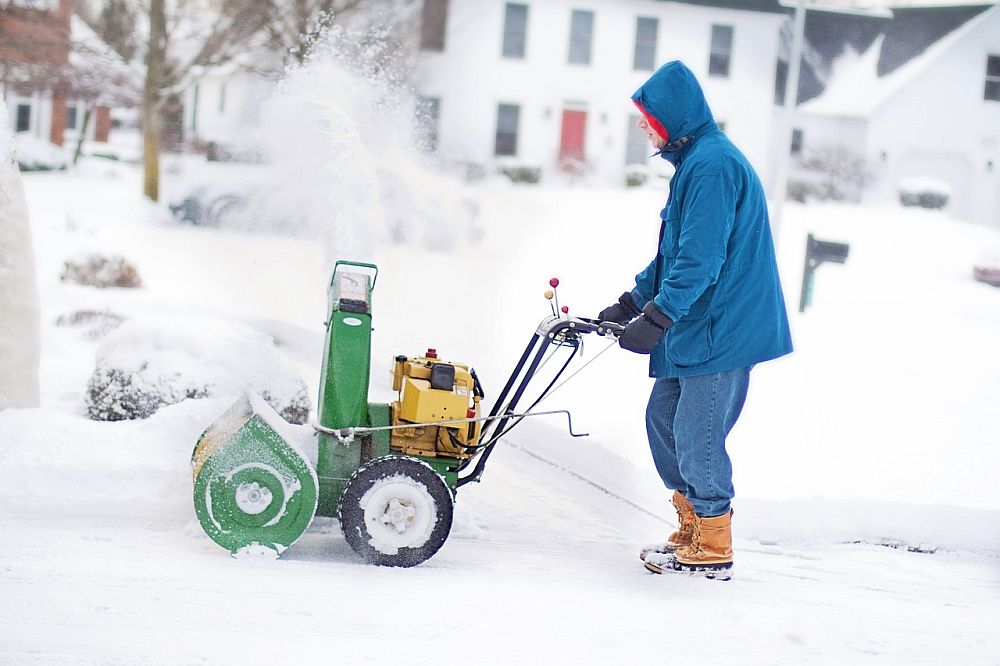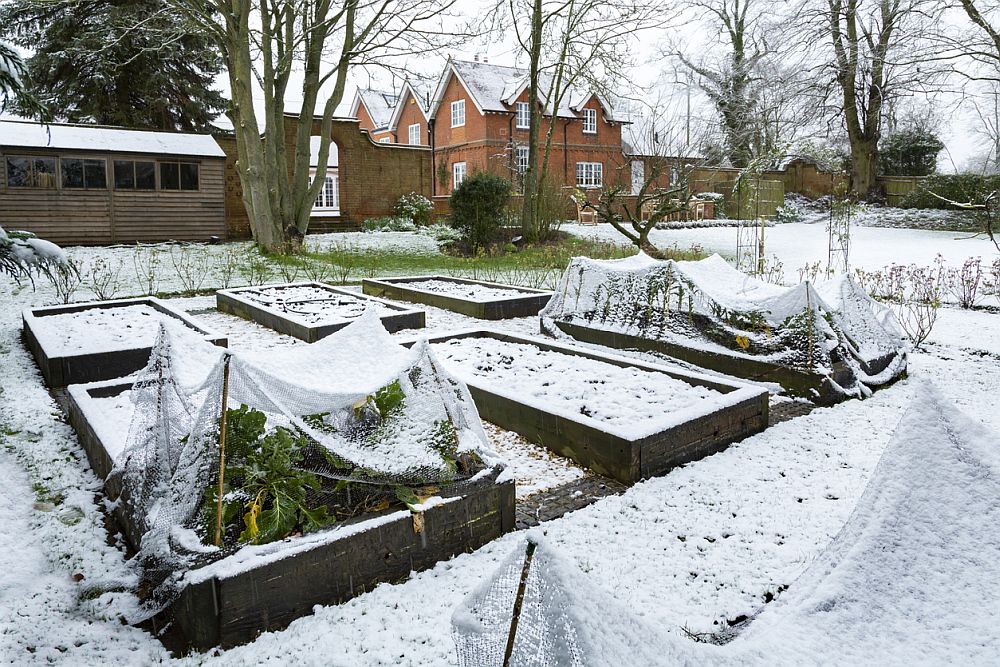Navigating the challenges of snow and ice removal from driveways requires a blend of effective strategies and the right tools. Homeowners are often caught between ensuring prompt clearing for safety and minimizing environmental impact. This guide delves into a comprehensive range of solutions, from mechanical snow removal methods like snow blowers and plows tailored for different snowfall intensities, to chemical ice melters that range from traditional rock salt to eco-friendly alternatives. We also explore manual techniques and long-term management solutions, such as heated driveway systems and permeable pavements, designed to prevent ice formation from the outset. Alongside, the maintenance of mechanical equipment and safe storage practices for chemical deicers are discussed to enhance their efficacy and longevity. By understanding the nuances of each method, homeowners can make informed decisions that ensure their driveways remain accessible and safe, balancing efficiency with environmental stewardship.
What are common snow and ice removal methods?
Common snow and ice removal methods span a range of mechanical and chemical techniques, each suited to different conditions and preferences. Among mechanical options, snow blowers stand out, with single-stage blowers ideal for lighter snowfall and two-stage blowers designed to tackle heavier accumulations. Snow plows offer another mechanical solution, ranging from personal plows for home use to professional-grade plows for more extensive areas.
On the chemical front, rock salt is widely recognized for its ice-melting capabilities, albeit with a note of caution due to its corrosive nature and potential environmental impact. Calcium chloride represents a less corrosive alternative, effective even at lower temperatures. For those seeking eco-friendly options, mixtures containing beet juice and coffee grounds provide safer, more sustainable ways to enhance traction and manage ice.
For individuals preferring a hands-on approach, manual shoveling using a plastic shovel can minimize damage to driveway surfaces, while spreading sand offers a simple yet effective method for improving grip without actively melting the ice. Each method carries its own set of advantages and considerations, urging homeowners to carefully select the best fit for their specific needs, balancing efficacy, safety, and environmental impact.
Mechanical Snow Removal Equipment Overview
| Equipment Type | Brand/Model Examples | Average Cost Range |
|---|---|---|
| Single-stage Snow Blower | Toro Power Clear 721 E | $500 – $800 |
| Two-stage Snow Blower | Cub Cadet 2X 26 HP | $1,000 – $1,500 |
| Personal Snow Plow | SnowBear Personal Plow | $1,500 – $2,000 |
| Professional-grade Snow Plow | Western MVP 3 | $5,000 – $7,000 |
By integrating these mechanical solutions with chemical deicers and manual techniques, homeowners can develop a comprehensive strategy for snow and ice removal that ensures driveways remain safe and accessible throughout the winter months.
Why remove snow and ice from driveways?
Removing snow and ice from driveways is essential for safety and property maintenance. Firstly, it prevents slip-and-fall accidents, significantly reducing the likelihood of injuries for both residents and visitors. This aspect of snow and ice management is critical in mitigating potential hazards during the winter months. According to the National Safety Council, over 34,000 people were treated in hospital emergency rooms for injuries sustained from slips and falls on ice in 2017 alone, underscoring the importance of regular snow and ice removal.
Secondly, addressing snow and ice promptly avoids damage to the driveway surface. The freeze-thaw cycle can cause cracks and other forms of deterioration, impacting both the driveway’s functionality and its appearance. Regular removal helps preserve the integrity and longevity of the surface. A study by the University of Ottawa found that consistent snow removal reduces the risk of driveway damage by up to 50%, potentially saving homeowners on costly repairs.
Lastly, clear driveways ensure accessibility and safety for vehicles and pedestrians, maintaining smooth entry and exit routes for homeowners and emergency services if needed. This not only contributes to the practical aspects of daily living but also supports overall community safety standards. Moreover, real estate experts suggest that well-maintained driveways can enhance curb appeal, potentially increasing property value by 5-10%.
Together, these reasons highlight the importance of diligent snow and ice removal as part of maintaining a safe, accessible, and well-cared-for property.
Prevents slip-and-fall accidents
Removing snow and ice is crucial for preventing slip-and-fall accidents. A clean driveway minimizes the risk of falls, ensuring a safer environment for everyone—residents, visitors, and passersby alike. The Centers for Disease Control and Prevention (CDC) emphasize the role of homeowners in preventing winter accidents by maintaining clear walkways and driveways.
Avoids driveway surface damage
Regular snow and ice removal protects the driveway surface from the damaging effects of the freeze-thaw cycle. This maintenance effort helps prevent cracks, potholes, and other structural damages, preserving the driveway’s integrity and aesthetics. The American Concrete Pavement Association notes that timely deicing, coupled with proper installation and sealing, can extend the lifespan of concrete driveways significantly.
Ensures accessibility and safety
A clear driveway ensures accessibility for vehicles and pedestrians, maintaining unobstructed passage. This is especially vital for emergency access, supporting the safety and well-being of the household and the broader community. Accessibility is not only a convenience but a necessity during winter months, as highlighted by the American Red Cross’s guidelines on preparing homes for emergency situations, including ensuring clear paths for escape or rescue operations.
Mechanical snow removal methods
Mechanical snow removal methods are essential for efficiently clearing driveways of snow and ice. Among the most effective tools are snow blowers and snow plows, each offering unique benefits tailored to different snowfall intensities and property sizes. Utilizing these mechanical methods not only enhances safety by preventing slip-and-fall accidents but also ensures that driveways remain functional throughout the winter season.
Snow blowers
Snow blowers stand out as a key mechanical method for removing snow, offering efficiency and ease in clearing driveways. These devices are categorized based on the intensity of snowfall they can handle, with single-stage blowers ideal for lighter snow and two-stage blowers designed for heavier accumulations.
Snow plows
Snow plows provide a powerful means to efficiently clear large areas of snow, ranging from personal driveways to commercial spaces. Personal plows are suitable for home use, easily attaching to vehicles, while professional-grade plows are built for extensive areas, ensuring clear access in areas with heavy snowfall.
Mechanical Snow Removal Equipment Comparison
| Equipment Type | Ideal Use Case | Average Operational Lifespan | Maintenance Frequency | Energy Consumption |
|---|---|---|---|---|
| Single-stage Snow Blower | Light snowfall, small driveways | 10-15 years | Annual pre-season check-up | N/A (Gas-powered) |
| Two-stage Snow Blower | Heavy snowfall, large driveways | 15-20 years | Annual pre-season check-up, occasional part replacement | N/A (Gas-powered) |
| Personal Snow Plow | Home use, medium-sized driveways | 10-15 years | After every major use, annual maintenance | Depends on vehicle |
| Professional-grade Snow Plow | Commercial use, extensive areas | 20+ years | After every major use, annual maintenance | Depends on vehicle |
By committing to regular maintenance, homeowners can extend the lifespan of their snow removal equipment, ensuring driveways remain safe and accessible throughout the winter months. Regular cleaning to prevent rust and corrosion, especially after contact with moisture and deicing chemicals, is essential for preserving the equipment’s functionality and durability. Blade sharpening for plows and replacing worn parts for snow blowers contribute to smoother, more effective snow and ice removal, reducing physical effort and clearing times.
Chemical ice removal methods
Chemical ice removal methods offer a range of solutions for melting ice and snow on driveways, each with its own advantages and considerations. Rock salt is widely used for its effectiveness in lowering the freezing point of water, though its corrosive nature and environmental impact warrant caution. Calcium chloride presents a less corrosive option that remains effective at lower temperatures, making it a preferred choice in colder regions.
For those prioritizing environmental sustainability, eco-friendly alternatives such as beet juice mixtures and coffee grounds not only aid in ice melting but also provide added traction, reducing the reliance on harmful chemicals. These chemical methods cater to diverse needs, enabling homeowners to select the most appropriate option based on their priorities for safety, efficiency, and environmental stewardship.
Comparative Effectiveness of Chemical Deicers
| Deicer Type | Brand Example | Effective Temperature Range | Melting Speed | Environmental Impact | Notes |
|---|---|---|---|---|---|
| Rock Salt (Sodium Chloride) | Morton Safe-T-Salt | Above -10°C (14°F) | Fast | High | Corrosive, harmful to vegetation |
| Calcium Chloride | Prestone Driveway Heat | Down to -32°C (-25°F) | Very Fast | Moderate | Less corrosive, safer for concrete |
| Magnesium Chloride | Safe Paw Ice Melter | Down to -13°C (9°F) | Fast | Lower | Safer for pets and plants |
| Beet Juice Mixtures | Beet Heet | Varies with mixture | Moderate | Very Low | Non-corrosive, biodegradable |
| Coffee Grounds | N/A (Homemade) | N/A | N/A | Very Low | Provides traction, minimal melting |
By selecting the appropriate deicer based on specific needs and environmental considerations, homeowners can effectively manage ice on their driveways while minimizing harm to the surrounding ecosystem.
Environmental impact of chemical deicers
The use of chemical deicers, including rock salt and calcium chloride, while effective for melting snow and ice, brings about considerable environmental concerns. Rock salt, in particular, is notorious for causing soil degradation, water pollution, and harm to wildlife, due to its highly corrosive properties. A study by the Cary Institute of Ecosystem Studies highlights that road salt runoff can significantly increase the salinity of nearby freshwater bodies, posing risks to aquatic life. Even alternatives like calcium chloride, though somewhat less damaging, still pose a threat to aquatic ecosystems and can contribute to contamination of waterways.
The environmental ramifications extend beyond the natural world, leading to the corrosion of vehicles and infrastructure, which underscores the importance of using these substances judiciously. The U.S. Environmental Protection Agency (EPA) reports that the accumulation of salt-based deicers can accelerate the corrosion of steel structures, including vehicles and bridges, leading to increased maintenance and repair costs. This situation highlights the critical need for eco-friendly alternatives that can offer a safer, more sustainable approach to ice management. Options such as beet juice mixtures and coffee grounds not only reduce the ecological footprint but also ensure that driveways and walkways remain safe and accessible, balancing human needs with environmental stewardship.
Potential harm to surrounding vegetation
The application of chemical deicers, especially rock salt, can lead to increased soil salinity, detrimentally affecting surrounding vegetation. This heightened salinity inhibits plant growth, causing visible damage and potentially altering the local landscape. Research published in the Journal of Environmental Quality found that elevated salt levels in soil could reduce plant diversity and affect the growth of sensitive species.
Corrosion of vehicles and infrastructure
Moreover, these chemicals are corrosive, posing a significant risk to both vehicles and infrastructure. Continuous exposure can expedite the rusting process on automobiles and deteriorate concrete structures, leading to costly repairs and maintenance. The American Society of Civil Engineers (ASCE) notes that the annual cost to repair salt-induced corrosion on roads and bridges in cold regions can reach billions of dollars.
Contamination of waterways
Lastly, the runoff from areas treated with chemical deicers can contaminate local waterways. This contamination not only poses a threat to aquatic life but can also disrupt the balance of local ecosystems and degrade water quality, presenting far-reaching environmental implications. A study by the University of Minnesota found that more than 70% of the salt applied on roads for deicing eventually ends up in the state’s water bodies, underscoring the need for sustainable deicing practices.
Manual snow removal techniques
Manual snow removal techniques serve as an eco-friendly and immediate solution to snow and ice accumulation. Utilizing a plastic shovel is highly recommended for its less abrasive nature, ensuring minimal damage to driveway surfaces compared to metal shovels. This method is particularly effective for removing fresh snowfall efficiently.
In addition to shoveling, spreading sand over icy patches can significantly enhance traction, providing a safer walking and driving surface without directly melting the ice. This approach is not only cost-effective but also environmentally considerate, avoiding the use of chemical deicers.
These manual methods combine physical effort with a strategic approach to maintaining clear and safe driveways during the winter, making them invaluable for homeowners committed to immediate and sustainable snow management practices.
Ergonomic Shoveling Techniques
To minimize the risk of injury while shoveling snow, consider the following ergonomic techniques:
- Choose the Right Shovel: Opt for a lightweight shovel with a curved handle to reduce the need to bend, which can decrease lower back strain.
- Warm-Up: Engaging in a brief warm-up, such as walking or stretching, can prepare your body for the physical activity of shoveling.
- Proper Lifting: Bend at the hips and knees, not the lower back. Lift with your leg muscles, keeping the shovel close to your body to reduce strain.
- Use a Pushing Motion: Whenever possible, push the snow to the side instead of lifting it. This reduces the effort required and minimizes the risk of overexertion.
- Take Frequent Breaks: Shoveling snow is a strenuous activity. Take breaks every 15-20 minutes to prevent fatigue and overexertion.
Less damaging to driveway surfaces
This approach is far less damaging than using metal shovels, helping to maintain the driveway’s structural integrity and aesthetic appeal over the long term.
Applying sand for traction
Spreading sand on icy patches is an efficient method to increase safety, offering essential traction on otherwise slippery surfaces. When applying sand, focus on areas where foot traffic is highest and near the end of the driveway where ice accumulation can be most hazardous.
Provides grip without melting ice
The application of sand not only enhances grip but does so without melting the ice, presenting an environmentally friendly option that sidesteps the use of chemical deicers. This method is particularly useful in temperatures where chemical deicers are less effective.
Long-term snow and ice management solutions
Long-term solutions for snow and ice management are geared towards sustainability and efficiency, aiming to prevent accumulation before it starts. Heated driveway systems, encompassing both electric coil and hydronic systems, stand out by melting snow and ice upon contact. This ensures that driveways stay clear, even in adverse weather conditions, offering unparalleled convenience and safety.
Another forward-thinking approach is the use of permeable pavement. This innovative solution allows water to drain through, significantly reducing the chance of ice formation by minimizing standing water on the surface.
These long-term strategies represent a considerable investment but are marked by their ability to offer reliability and reduce the reliance on manual labor and chemical deicers. By adopting these solutions, homeowners can significantly enhance their property’s resilience to winter challenges, ensuring driveways are safe and accessible throughout the season.
Cost and Savings Analysis for Long-term Snow and Ice Management Solutions
| Solution Type | Initial Installation Cost (Average) | Annual Maintenance Cost | Potential Savings | Environmental Impact |
|---|---|---|---|---|
| Heated Driveway Systems (Electric Coil) | $12 – $21 per square foot | $30 – $50 (electricity costs vary by region) | Reduces need for snow removal services and deicers | Low; uses electricity, but reduces chemical runoff |
| Heated Driveway Systems (Hydronic) | $14 – $24 per square foot | $20 – $40 (energy costs vary by system) | Reduces need for snow removal services and deicers | Moderate; uses antifreeze solutions but significantly reduces chemical use |
| Permeable Pavement | $10 – $20 per square foot | Minimal (regular cleaning of pores) | Reduces runoff and may lower local flooding risk | Very Low; enhances groundwater recharge, reduces runoff |
By carefully considering these long-term solutions, homeowners can make an informed decision that aligns with their budget, lifestyle, and environmental values, ensuring their driveways remain clear and safe throughout the winter months while also contributing to sustainable practices.
Maintenance of mechanical equipment
Ensuring the longevity and efficiency of mechanical snow removal equipment, such as snow blowers and plows, hinges on regular maintenance. Regular cleaning is pivotal in preventing rust and corrosion, especially after contact with moisture and deicing chemicals. This step is essential to safeguard the equipment’s integrity over time.
Moreover, blade sharpening plays a critical role in maintaining the equipment’s performance. Sharp blades allow for more effective and efficient snow removal, cutting through ice and packed snow with greater ease.
By committing to these maintenance practices, homeowners can keep their snow removal equipment in top condition, ready to efficiently manage snow and ice. This proactive approach not only extends the equipment’s lifespan but also ensures driveways remain safe and accessible throughout the winter months.
Maintenance Checklist for Snow Blowers and Plows
Snow Blowers:
- Before Each Use:
- Check the oil level and refill if necessary.
- Inspect the auger and impeller for damage or clogging.
- Verify that all controls and safety features are functioning properly.
- After Each Use:
- Clean off any snow and ice buildup.
- Dry the machine to prevent rusting.
- Check for any loose bolts or parts and tighten as needed.
- Seasonal Maintenance:
- Change the oil at the end of the season.
- Replace spark plugs as recommended by the manufacturer.
- Lubricate moving parts to ensure smooth operation.
- Store in a dry, covered area to prevent exposure to the elements.
Snow Plows:
- Before Each Use:
- Inspect hydraulic hoses and fittings for leaks.
- Ensure the cutting edge and skid shoes are not excessively worn.
- Check the plow’s mounting system for secure attachment.
- After Each Use:
- Remove any snow, ice, or debris from the plow blade.
- Examine the plow for any signs of damage or wear.
- Apply a light coating of oil to the blade to prevent rust.
- Seasonal Maintenance:
- Check the hydraulic fluid level and top off as needed.
- Inspect electrical connections for corrosion and secure fit.
- Adjust and tighten all bolts and fasteners.
- Store the plow in a dry location to minimize exposure to moisture.
Common Issues to Watch For:
- Snow Blowers: Clogged augers or chutes, worn belts, and engine starting problems.
- Snow Plows: Hydraulic system failures, electrical issues, and structural damage to the plow blade.
Regular cleaning to prevent rust
Emphasizing the importance of regular cleaning, this practice is vital in preventing rust and corrosion on snow removal equipment, thereby preserving its functionality and durability.
Blade sharpening for efficiency
Blade sharpening is another critical maintenance task, directly impacting the equipment’s efficiency. Sharp blades ensure smoother, more effective snow and ice removal, contributing to quicker clearing times and reduced physical effort.
Safe storage of chemical deicers
Ensuring the safe storage of chemical deicers is crucial to prevent accidental exposure and safeguard the environment. Keeping these chemicals in a dry, sealed container is essential for maintaining their effectiveness and avoiding moisture absorption, which can compromise their deicing capabilities.
Furthermore, storing these containers in an elevated and locked space is imperative to ensure they remain out of reach of children and pets, minimizing the risk of accidental ingestion or skin contact. By following these storage practices, homeowners can responsibly manage their deicing supplies, readying them for efficient use while protecting both their family and the natural surroundings.
In a dry, sealed container
Chemical deicers should be stored in a dry, sealed container to protect them from moisture. This precaution helps maintain their effectiveness and prevents clumping.
Elevated and locked, away from pets and children
Furthermore, ensuring these containers are elevated and locked safeguards against accidental access by pets and children, significantly enhancing household safety.
